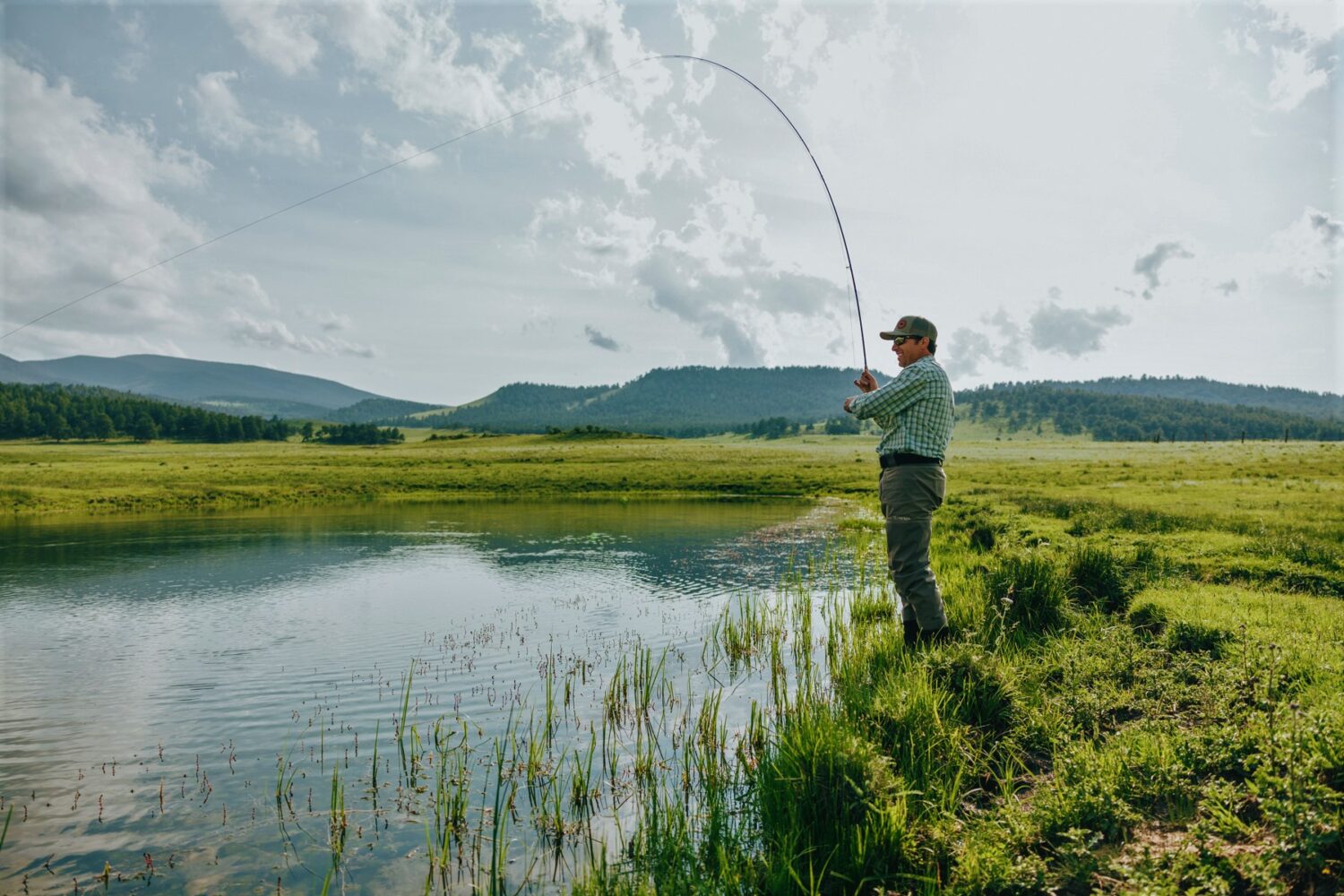Stillwater Fly Fishing Tips and Tactics

All across the west, rivers and creeks are surging as snow in the high country begins to melt and runoff takes hold. For eager anglers who are awaiting great summer fishing, runoff presents an obstacle that can make it challenging or even outright unsafe to get out on the water. Luckily, the same conditions that make for challenging river angling create some of the best Stillwater fly fishing of the entire year. In this month’s edition of Field Notes, we offer some tips for fly fishing the lakes, reservoirs, and ponds of the Rocky Mountains and beyond.
Picking your Location
One of the most daunting tasks for new Stillwater anglers is simply choosing a place to fish. Whereas rivers are fairly easy to read- pockets, pools, riffles and the like- many lakes look homogenous at first glance, creating a sense that the fish could be anywhere. Ultimately, trout in lakes and reservoirs seek many of the same conditions they would in rivers. Submerged structure and sudden depth changes remain good bets, as do coves, creek mouths, and any other discrepancy from the standard shoreline.
Wind and water temperature are two factors that have outsized impact when Stillwater fishing. A consistent wind will push algae and aquatic invertebrates into the windward shore, often stirring up the substrate along the bank and creating a “mud line” where dirty water meets clear water. Fish will concentrate along these windward edges, feasting on the displaced insects and using the visual cover of the mud line to hunt the smaller forage fish which gather to feed on algae. As frustrating as it can be to cast flies directly into a headwind, these windward banks are one of the best places to find consistent success on Stillwater fisheries.
Water temperature can also be affected by wind but is more often a factor of timing and depth. In the early season, trout will often gravitate toward shallow coves and flats where higher water temperatures create the earliest insect activity. Conversely, once water temperatures reach and exceed the mid-sixties, fish will generally retreat toward the deeper water of the main lake. The same concept applies to cool mornings and evenings versus hot middays. Follow these patterns and adjust the depth of your setup until you can identify the areas fish are frequenting, and eventually you’ll find the water temperature sweet spot.

Rigging for Success
Once you’ve identified a prime Stillwater location, it’s time to consider your rigging. Many of the same setups used on rivers are equally effective on lakes- dry dropper and short subsurface approaches can be a great, familiar place to begin for new Stillwater anglers. However, from a sheer success standpoint, few Stillwater rigs are better than a depth-adjustable nymph rig. A long leader paired with an indicator and a couple of lake-specific flies such as chironomids, leeches, water-boatmen, or callibaetis can generate great days on almost any western Stillwater from a small pond to a 100,000+ acre-foot reservoir. Again, the key to this setup is to adjust the depth of the indicator frequently until you’re consistently finding fish. While Stillwater trout often feed somewhere in the top 8-12 feet of the water column, depth changes as small as six inches can have a profound effect on your success.
Stillwater Case Study: The Bar Star Ranch
Many of the Western ranches listed by Confluence Land Company offer phenomenal Stillwater opportunities, both onsite and in famed nearby lakes and reservoirs. Perhaps the most unique Stillwater opportunity currently marketed by CLC is the Bar Star Ranch, which boasts a completely private 150 acre-foot reservoir teeming with trophy trout. The reservoir at Bar Star Ranch is a complete fishery that demonstrates many of the concepts described above. Several shallow coves and submerged weed beds provide ample early season trout habitat, while the center of the reservoir maintains cool, deep water throughout the Summer and can be effectively fished from a belly boat or kayak. On a breezy day at Bar Star, you’ll find fish congregating along the windward bank in search of an easy meal. And while Bar Star Ranch can offer some phenomenal dry fly and streamer fishing, casting a nymph rig into this unique fishery is almost a surefire way to hook one of the lurking Rainbow, Brown, or Cutthroat Trout which regularly exceed 20 inches and occasionally reach 10 pounds.
Stillwater angling is a great way to beat the runoff doldrums, hone your skills before peak season, and learn an entirely new and enjoyable way to explore the angling opportunities the West has to offer. At Confluence Land Company, our brokers don’t just sell land- we carry a deep understanding of each of the recreational activities that make the land special. Confluence offers an unparalleled 40+ years of combined experience in the brokerage and development of angling properties that boast world-class still and live-water fishing opportunities. Whether you are a buyer interested in purchasing an angling property of your own, a landowner looking to expand, develop, or divest your angling resources, or simply want to explore angling opportunities nearby, please do not hesitate to contact us.


